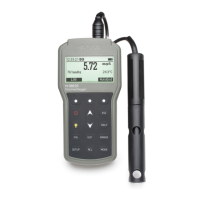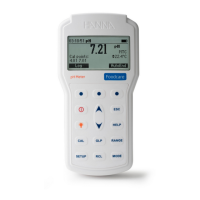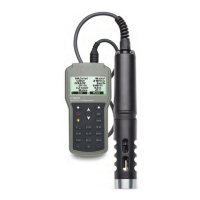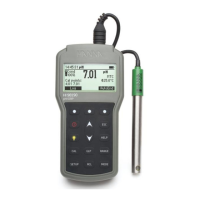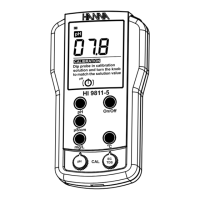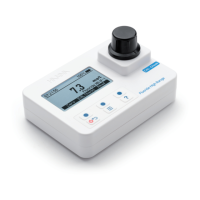84
The HI7609829‑10 sensor is specified for 0.02 to 200 ppm (mg/L) NH
4
+
‑N (equivalent to
0.026‑260 ppm (mg/L) NH
4
+
). Based on the corresponding molecular weights of nitrogen and
ammonium, the relationship is: NH
4
+
‑N =(NH
4
+
)(14/18) = (NH
4
+
) x 0.7778. NH
4
+
‑N is also
called ionized ammonia. The sensor responds in a Nernstian manner (like a pH sensor) and produces
a voltage that the meter converts to a concentration value.
This Appendix describes additional information about the ISE sensors used on the HI76x9829 Probe.
HI7609829‑10: Ammonium selective electrode (ISE) is a combination liquid membrane sensor used
for the detection of free ammonium‑nitrogen in freshwater samples. The sensor utilizes a polymeric
membrane made with ammonium ionophore in a PVC head and silver/silver chloride double junction
gel filled reference electrode. The outer body of the sensor is the thermoplastic PEI. This sensor is
used in place of the pH.
The measurement of ammonium‑nitrogen, NH
4
+
‑N is a useful tool in the measurement of surface
water contaminants such as tracing the source of agricultural operations runoff or studying nutrient
levels in natural waters. HI7609829‑10 is an ion selective sensor that responds to the free Ammo‑
nium ion. Ammonium ion is the ionized portion of the total ammonia concentration and the amount
present depends on pH. When the pH of the sample is below 8 pH, the primary form of ammonia
is ammonium ion. See figure below.
The relationship is more complicated with increasing salinity but the two forms together equal total
ammonia.
APPENDIX C - ISE INFORMATION
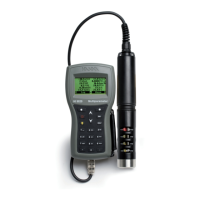
